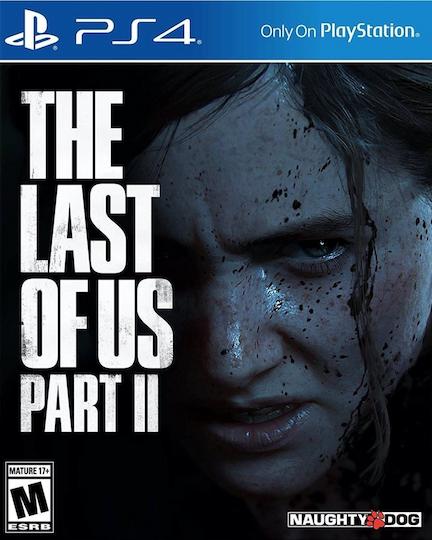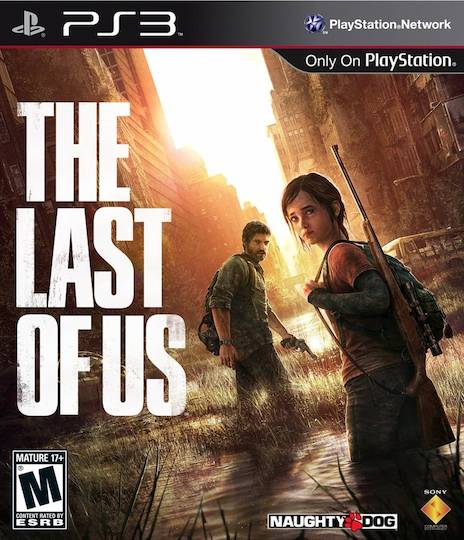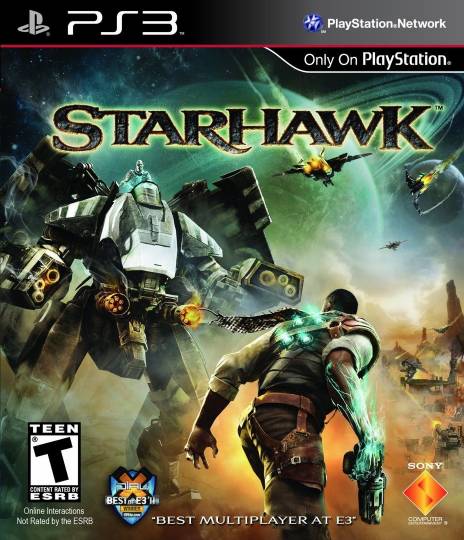
There have been a good number of grade A releases recently (I’m still working on GTA4, and recently picked up On the Rain-Slick Precipice of Darkness), but the one that has me completely hooked is The World Ends With You, an unconventional RPG for the Nintendo DS by Square-Enix.
I’ll confess, I had initially more or less dismissed the game because its J-pop aesthetic really turned me off. However, when people around me started raving about it I suspended my cynicism and decided to check it out. What I found was a game that combines three ingredients that I usually go a bit nuts for: fun and fast-paced combat, focus on collection (of pins, in this case) and continuous accumulation of small stat bonuses. In many ways the game reminds me of the highly underrated Mega Man Battle Network series. MMBN2 was one of my favorite pre-DS handheld games, but I’ll try a little harder to convince you of its greatness some other time.
One of the coolest things about The World Ends With You is the fact that the designers were not content to follow RPG conventions. It’s as if for every small aspect of the game, they thought to themselves: “How can we do this differently?” Indeed, the sheer number of interesting and strange mechanics they came up with is staggering. Don’t take my word for it, here’s a summarized spoiler-free list:
- Two Screen Combat: The combat takes place over two screens, with both party members fighting the same enemies asynchronously.
- Separate Input Modes: The bottom screen character is controlled entirely by the stylus, the top one by the control pad.
- Rhythmic Combat: To fight effectively, you must chain combos rhythmically between the two screens.
- Elemental Spectra: Instead of the usual fire/water/thunder/etc RPG elements, TWEWY has positive/negative/neutral elements.
- Trend Bonuses: Wearing pins that are trendy in a particular region of Shibuya nets combat bonuses.
- Trend Setting: Wearing pins in an area will also gradually make that brand trendier.
- Befriend Shopkeepers: Buying from the same shopkeeper frequently will unlock the hidden abilities of certain outfits.
- Digestion: Eating food nets small stat bonuses, but it must be gradually digested in combat.
- Reading Minds: You can read people’s minds, and often must do so to advance the story.
- Implanting Ideas: You can implant ideas into people’s minds, which is also used to advance the story.
- Fight When You Want: All regular combat is player initiated.
- Run When You Want: You can escape from any normal fight at any time.
- Mingle Mode: You can leave your DS in “mingle mode” and receive XP bonuses when another DS is wirelessly detected, even if they’re playing a different game.
- Custom Shops: If you detect another player playing TWEWY while in mingle mode, you will be able to buy pins and items from their custom shop (and vice versa.)
- Away Time: You get XP bonuses for time spent not playing the game for up to 7 days.
- Controllable Difficulty: You can switch between easy/normal/hard difficulty at any time. Playing on harder difficulties simply nets you better loot from enemies.
- Controllable Level: Your character’s level is on a slider, and can be adjusted at between fights. Fighting as a level 1 when you’re really level 20 nets you big drop bonuses.
- Chaining Enemies: You can choose to fight more monsters in a row to increase the likelihood of pins dropping.
- Shared HP Bar: The shared HP bar is double sided; the top player takes damage from the top, the bottom player from the bottom.
- Integrated Minigame: Every attack pin in the game doubles in a surprisingly fun minigame called Tin Pin Slammer.
I’m sure some of these mechanics have been used by other games in the past. However, what’s really important here is that the developers weren’t satisfied with following genre conventions. They took design risks everywhere, but ended up with a remarkable game with mechanics that really gel. It takes a lot of courage to put out such a unique and interesting game, and I highly urge you to check it out.





May 27th, 2008 at 12:12 am
Terrific summary of this game’s crazy combo of gameplay elements.
I think lots of us enjoyed the unconventional aspects of TWEWY simply because they shook up the formula. But, as you suggest, these new things needed to be more than different; they also needed to be fun and rewarding. Your list effectively quantifies how the game pulled this off so well. Next time somebody asks me why I like this game so much, I’ve got 20 more excellent reasons. :-)
May 29th, 2008 at 10:27 pm
@Michael: It’s a real shame that Square Enix’s recent poor financial performance will probably mean fewer interesting games like TWEWY and more safe bets (a.k.a. FF7 sequels.)
June 4th, 2008 at 10:35 am
TWEWY also had some pleasant courtesies for the player that are inexplicably rare in other RPGs. The ability to save (virtually) anywhere was a welcome change from the annoying trekking to save points. Also, having the option to retry a battle was much friendlier than having to reload the game and sit through the cutscenes again. The retry feature could have been better (if it allowed you to adjust the level slider or alter your pin deck), but it was still much more player-friendly than the annoying Game Over screens most games hit you with. Neither of these are unique to TWEWY, but they’re pretty unusual.
June 4th, 2008 at 5:46 pm
@Michael#2: Funnily enough, I ran into the odd situation of having difficulty beating the boss that unlocks the “retry on death” option. I had to sit through his cutscene a few times :P
I agree, it’s refreshing to see an RPG that doesn’t try to artificially inflate the difficulty and length with staggered checkpoints and repeated cutscenes. The game is as easy or as hard as you’d like it to be, and you’re rewarded accordingly. I’d love to see this approach adopted in other games.
June 27th, 2008 at 4:33 pm
“How can we do this differently?” Sure. But the developers probably didn’t ask themselves all of the following questions at all.
“How can we balance this?”
“Is the combat too confusing, complex, complicated?”
“How can we design the mechanics to work well together?”
“How can we reduce the amount of abstraction in the game?”
“How can we open up the ridged linear structure of the non-combat part of the game?”
Taking risks is admirable. Doing things differently is fresh. Regardless, the final product must be well constructed. TWEWY is tangled up in a mess of convoluted combat mechanics and lack luster non-combat design. It’s just another example of why RPGs have fallen completely behind in the design department. Apparently, no amount of interesting ideas, snappy music, and collectables can fix that.
June 27th, 2008 at 11:43 pm
@Richard: Thanks for your comment, always nice to see another perspective on things.
I agree that a game that is purely experimental but lacks balance, polish and solid construction isn’t of much value. However, I don’t believe that TWEWY belongs in this category.
Many of the mechanics compliment each other very well (“fight when you want” with “controllable difficulty”, and “separate input modes” with “rhythmic combat” for instance) and several could not exist without the other. The combat can be very complex, but they’ve introduced several mechanics to balance out the difficulty for players who can’t handle it. While the storyline is entirely linear, at least the story and setting are quite unique.
I also feel that TWEWY is really a step in the right direction for RPGs. We need people to shake up for the formula, even if they reach a little too far. For instance, I have a lot more respect for the TWEWY design team’s vision than I do for the Lost Odyssey team’s strict adherence to the JRPG formula.
June 28th, 2008 at 1:11 am
It’s important when talking about mechanics that they’re ranked in order of importance. RPG’s can be tricky to pin down because of dichotomy into battling and overworld/talking to people parts (I don’t have a good word to describe the non-battling sections). Either way, the mechanics of the battle system take priority.
It feels like the developers didn’t have enough experience to make the action combat good enough. So on top of the mistakes, they stacked up the features to help remedy the stress. Balancing difficulty by moving around a few level sliders, messing with your partners AI, and being able to switch the game to an easier mode is not only far too abstract, but all these options detract from what little gameplay the game actually has. The problem with the complexity isn’t difficulty, it’s design.
Check out this article where I talk about abstract mechanics. You might need to start at the first article in the four article series.
http://critical-gaming.blogspot.com/2008/05/mechanics-and-abstractions-part4.html
It may be hard to see it now, but RPGs don’t have a future. The mechanics that make up the foundation of the genre are bad in and of themselves, and now they’re obviously outdated. Why issue commands in a menu when you can just do the action yourself. In the beginning RPGs developed as a substitute for action. Now that we’ve advanced so far, we can just create an action based battle system and integrate it seamlessly into the game experience. And when RPGs become more action based, games like TWEWY makes it painfully clear that RPG developers are now far behind when it comes to creating quality action.
June 28th, 2008 at 6:11 pm
@Richard: I get the impression that, in general, you don’t care for RPGs. However, the basis for this criticism seems to be that “action games do action better” and “abstraction is undesirable.” I would argue that this isn’t always true, and that someone can play an RPG and expect an entirely different experience than playing an action game.
For instance, consider an action game where you play a warrior on a battlefield (something like Dynasty Warriors, for instance.) You could argue that an RTS game where you control many warriors (such as Age of Empires) is just an abstraction of that. Is the RTS inherently worse because it is abstracted further from the action? No, it just requires an entirely different skillset; usually, as you described, “optimization.” Optimizing resource gathering, production, unit management, etc.
As for your argument that the level sliders, etc. in TWEWY are just an artificial way of balancing out the difficulty, I don’t completely disagree. TWEWY is such a strange game that it would have been difficult to set one difficulty level for all manner of players.
However, is dynamic difficulty necessarily a bad thing? Many games offer the player a static choice of difficulty levels (easy/medium/hard.) The game’s rewards scale to the difficulty slider, which gives players with coordination incentive to master the combat system without alienating beginners.
We’re constantly moving away from the “skill test” mentality of the arcade cabinet days, and I think dynamic difficulty settings are just the next step in this evolution. While this particular mechanic might not be widely adopted, it’s a step in the right direction.
June 29th, 2008 at 12:19 am
I like FF6, Pokemon, Paper Mario, Chrono Trigger. I still like these games while understanding that there isn’t’ much to their gameplay.
This issue has nothing to do with skills or different skill sets. The RTS game in your example isn’t an abstraction of an action game. The primary mechanic of an RTS isn’t the attack action, but the attack command. Issuing commands to multiple units in real time is the mechanic just like Chess or Advance Wars or even Pikmin.
Abstract mechanics tend to be worse because of how they reduce a game into “simple/shallow” optimization. All things can be optimized. But when the optimization is a simple math problem that’s repeated ad infinitum, then there’s not much to be said about the gameplay. Optimizing dynamic/variable mechanics is completely different than shallow ones.
You say that TWENY would have been difficult to balance without the slider… well, yeah. Making games isn’t easy. I dont’ let the developers off the hook for it. No excuses.
And I must say that the difficulty slider in TWEWY is not dynamic. It’s linear and simple. When other games offer what you called “static” difficulty choices, the actual changes in their gameplay are usually far more dynamic than the changes in TWEWY. After all, the interaction and the combat gameplay in TWEWY is such a mess it doesn’t have a lot of room for its dynamics to adjust.
The problems that TWEWY has are rooted in its core design. Addressing the methods they took to remedy the poor design choices won’t get us anywhere. Therefore, it doesn’t matter that the game rewards players who tinker with the difficulty.
Good game design from the start is the right direction. Not adding addition abstractions on an already overly abstract game.